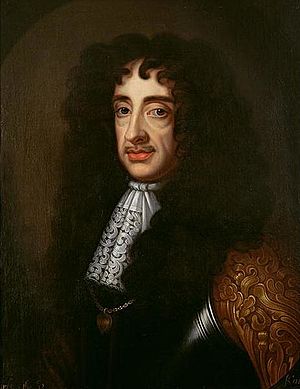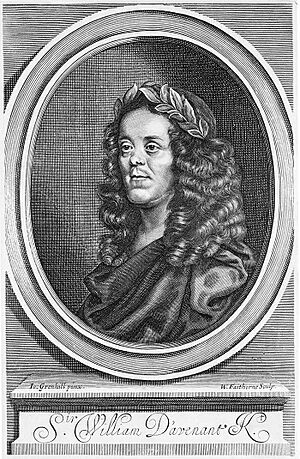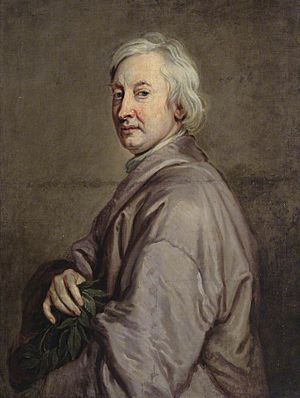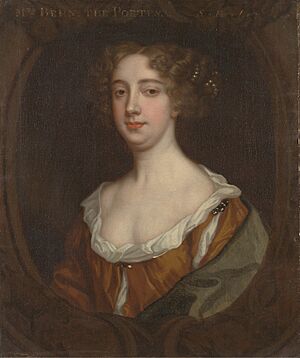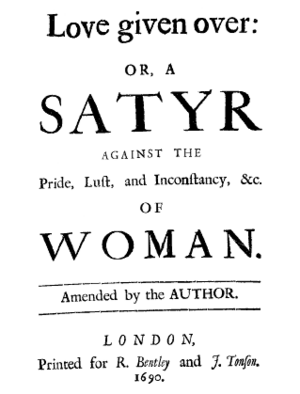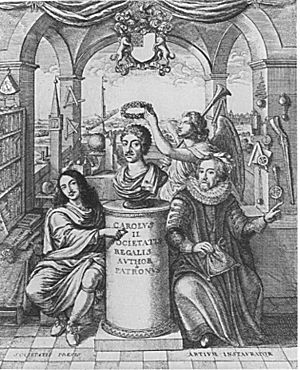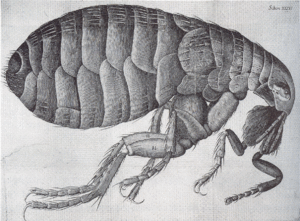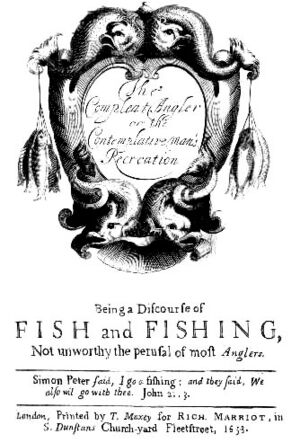Restoration literature facts for kids
Restoration literature refers to the English writings created during the period known as the English Restoration (1660–1689). This time marked the return of King Charles II to the throne after a period when England was ruled without a king. The literature from this era often celebrates or reacts to the new royal court. It's a mix of different styles, from serious works like Paradise Lost to lively comedies such as The Country Wife.
This period also saw important developments in thinking and writing. John Locke wrote about government, the Royal Society was founded for scientific study, and literary criticism began to take shape. News started to become a product people bought, and essays became a popular way to share ideas regularly.
The exact dates for "Restoration literature" can vary depending on the type of writing. For plays, it might extend until 1700. For poetry, it might end earlier, around 1666. In general, the term describes literature that began and thrived under King Charles II. This includes poems praising the restored monarchy, writings expressing sadness among Puritans, and literature about trade and communication as England's empire grew.

Contents
Historical Changes and Literature
Before the Restoration, England was under Puritan rule, and there was strict censorship. Theatres were closed, and certain types of poetry were not published. This created a break in how literature developed. When Charles II returned, it was like a fresh start for all kinds of writing.
The years leading up to the Restoration were quite chaotic. People had to change their religious beliefs often, and each change brought different kinds of writing. When Oliver Cromwell died, and his son Richard Cromwell tried to take over, politicians quickly chose sides. Religious writings and poems praising leaders were common.
Many royal supporters, including the young Charles II, lived in exile in Holland and France during this time. They experienced the lively literary scenes of these countries. Charles II enjoyed French plays, and nobles in Holland learned about trade and open discussions. This exposure to European culture greatly influenced English literature upon their return.
A New Start for Arts
When Charles II became king in 1660, there was a feeling of excitement and newness in literature. England felt more connected to European culture than before. One of Charles's first actions was to reopen the theatres. He gave special permission to two companies, the King's Company and the Duke of York's Company, to put on plays.
Drama became a public and royal matter. Both theatres had to perform older plays, and one was even told to present plays that would teach good morals. The position of Poet Laureate, a poet officially appointed by the monarch, was also brought back. This poet would write special poems for royal birthdays and events.
Charles II was known for his cleverness and worldly knowledge. So, witty and playful poetry was popular at court. Charles and his brother James also supported science and mathematics. This meant that curious thinking and exploring nature were encouraged. Charles II even supported the Royal Society, a group dedicated to scientific study.
The king and his court had learned from their time in exile. While Charles II was a member of the Church of England, he was generally tolerant of different religious and political views. This led to more writings on politics and economics during his reign.
Authors reacted to Charles's return in two ways. Some tried to bring back earlier English literary styles. Others felt a strong sense of newness and were inspired by French literature, focusing on wit, satire, and a style called Neoclassicism.
Poetry in the Restoration
Poetry was very popular and important during the Restoration. Poems often influenced political events and quickly reflected what was happening in society. It was an age where the king's influence was felt everywhere in poetry. Many types of poems were developed, including lyric, historical, and epic poems.
The English Epic Poem
English poets at the time felt that England didn't have a grand national epic poem, like other countries did. An epic poem is a long, serious poem about heroic deeds, often important to a nation's history.
Sir William Davenant was the first Restoration poet to try writing an epic. His poem, Gondibert, was long, but it used a simple rhyme style that many critics didn't think was grand enough for an epic.
Interestingly, John Milton's famous epic poem, Paradise Lost, was published during this time. Milton also wanted to write an English epic. He chose to write in blank verse (poetry without rhymes). His poem tells the story of all humanity, focusing on Christianity rather than just English history.
Other poets also tried to write an English epic, often about the legendary King Arthur. However, these attempts were generally not successful or popular. The Restoration period ended without a widely recognized English epic poem.
Poetic Styles and Forms
Lyric poetry, where the poet expresses personal feelings, was not very common. Instead, poets used more formal styles like odes (poems praising something), pastorals (poems about country life), and other structured verses. The period valued public statements and ideas more than individual emotions.
The most popular poetic form was the rhyming couplet in iambic pentameter. This means two lines that rhyme, with each line having a specific rhythm of ten syllables. This form was considered dignified and suitable for serious topics. John Dryden helped popularize this, calling it the "heroic couplet" because it was good for heroic subjects.
After 1672, a humorous version called "Hudibrastic verse" became popular. This used shorter lines and unexpected rhymes, mainly for satire (making fun of things). Jonathan Swift later used this style a lot.
While Dryden is well-known today, many court poets were famous at the time, including Edmund Waller, John Wilmot, 2nd Earl of Rochester, and Aphra Behn. These poets often used satire and wit in their work.
John Dryden was a very productive writer. He wrote public poems and tried different styles. His most famous works often defended the king and the Church of England. For example, Absalom and Achitophel made the king's actions seem reasonable. He also helped develop the mock-heroic style, which uses epic language to describe silly or unimportant subjects.
The Earl of Rochester was a bold and often shocking poet. His poems were very direct and sometimes political. After the strict Puritan rule, the openness in his poetry was a way of challenging old ideas. Rochester's poems often made fun of existing forms and showed off his cleverness.
Aphra Behn was a very successful writer, especially known for her plays. However, she also wrote a lot of poetry. Her poems were playful and witty, reflecting the spirit of the court. What's remarkable is that Behn was not from a noble family. She was a commoner and a woman, yet she achieved great success in the same circles as the king. She even worked as a spy for Charles II. Her success shows that not all poetry was written and read only by nobles.
Robert Gould was another unusual success. He was an orphan from a common family and worked as a servant. Despite having no formal schooling, he learned to read and write and became a very popular poet in the 1680s and 1690s. His poem Love Given O'er, or A Satyr Upon ... Woman was very popular, though it contained strong criticisms of women.
Translations and Satire
Many writers translated works from other languages. Roger L'Estrange was a notable translator. Satire, which uses humor or exaggeration to criticize people or ideas, was a very important form of writing. However, publishing satire was risky. Writers often remained anonymous because they could be sued for defamation or even physically attacked by those they criticized. This means many satirical poems from this time are still unknown. Despite the dangers, satire was a lively and energetic part of Restoration literature.
Prose Writing
Prose writing in the Restoration period was largely dominated by Christian religious texts. However, this era also saw the beginnings of two important genres that would become very popular later: fiction (like novels) and journalism. Religious writing often mixed with political and economic ideas.
Philosophical Ideas
The Restoration period saw the publication of important works on politics and philosophy, influenced by the changes during the time without a king. The court's interest in classical ideas and scientific observation also encouraged new philosophical works.
Thomas Sprat wrote History of the Royal Society in 1667. In this book, he outlined the goals of scientific study: to use clear, precise language and avoid vague terms. He believed scientific explanations should be easy for everyone to understand, like a Protestant sermon. He also stressed the importance of experiments that could be repeated by anyone.
William Temple wrote several works praising a quiet life of thought and observing nature. He also introduced a debate into English literature about whether ancient or modern learning was better. This debate influenced many writers in the next century.
This was also the time when John Locke wrote many of his famous philosophical works. Locke's ideas focused on how humans understand things and how to make good decisions. His book, Two Treatises of Government, explored the idea of a "social contract" between people and their government. This work later inspired thinkers during the American Revolution.
Religious Writings
After the Restoration, some of the more extreme religious writings became less common, but radical ideas still existed. Puritan writers like John Milton had to adapt or withdraw from public life. Writings that had openly criticized the monarchy were suppressed.
Two religious authors from this time stand out: John Bunyan and Izaak Walton.
Bunyan's The Pilgrim's Progress is an allegory, a story with a hidden meaning. It tells the journey of a character named Christian and guides readers on how to live a good Christian life. The book is written in a simple narrative style and was very popular.
Izaak Walton's The Compleat Angler is about fishing, but readers loved it for its peaceful descriptions of nature and its focus on personal reflection. It's a unique guide that helps individuals find calm and meaning.
Other religious writings included sermons and debates about church and government issues. Robert Boyle, a famous scientist, also wrote Meditations on God, which was very popular as a devotional book. The high sales of devotional literature show that many English middle-class people could read.
The Birth of Journalism
During the Restoration, news was often spread through "broadsheets," which were single large sheets of paper with a partisan account of an event. However, this period also saw the beginning of professional, regular journalism in England. Newspapers started to appear around the time William III became king in 1689.
Early attempts at news sheets were not always consistent. Henry Muddiman was the first to succeed with a regular newspaper called the London Gazette. It started in 1665 as the Oxford Gazette (when the court was in Oxford to avoid the plague) and later became the London Gazette (which still exists today!). However, Muddiman's paper was sent by hand to subscribers and not printed for general public sale.
The Athenian Mercury was the first regularly published periodical in England that was sold to the public. It began in 1691. Besides news, it allowed readers to send in anonymous questions and receive printed answers. These questions were often about love and health, but some were funny or strange. This question-and-answer section made the journal very popular and profitable. It ran for six years and even published the first periodical specifically for women, "The Ladies' Mercury."
The Athenian Mercury paved the way for many later newspapers and journals. It also published poetry from readers, including early works by Jonathan Swift.
Early Fiction
It's hard to say exactly when the English novel began, but long fictional stories and made-up biographies started to become distinct during the Restoration. French and Spanish "Romance" novels, which told tales of love, danger, and revenge, were popular in England.
These "Romance" novels were often seen as a feminine form of reading. However, novels slowly moved away from stories of knights and chivalry and began to focus on more ordinary or adventurous characters. Aphra Behn was a very important figure in the rise of the novel. She was not only the first professional female novelist but also possibly one of the first professional novelists of either gender in England.

Behn's first novel was Love-Letters Between a Nobleman and His Sister (1684), a romantic and political story told through letters. She also wrote "Histories" of fictional people. Her most famous novel was Oroonoko (1688). This was a fictional biography, presented as a "true history," about an African king who was enslaved in Suriname, a colony Behn had visited. Behn's novels show the influence of her experience writing plays. Later, authors like Daniel Defoe would use similar storytelling methods.
Other types of fiction were also popular, such as versions of Reynard the Fox stories and various English folk tales like Dick Whittington and Tom Thumb. These were often short, inexpensive books called "chapbooks."
Theatre in the Restoration
A New Era for Plays
The return of King Charles II, who loved plays, in 1660 was a huge moment for English theatre. As soon as the Puritan ban on public performances was lifted, plays quickly reappeared. Two theatre companies, the King's and the Duke's Company, were set up in London. They built two fancy playhouses designed by Christopher Wren, complete with movable scenery and special effects like thunder and lightning machines.
Today, scholars recognize that drama changed very quickly during this period, influenced by social and political events. The competition between the two theatre companies also played a big role. Playwrights and managers had to be very responsive to what the audience wanted. The mid-1670s were a peak time for both the number and quality of plays.
From 1682, the number of new plays dropped sharply. This was due to the two companies merging and political unrest. The 1680s were particularly slow for comedies, except for the amazing career of Aphra Behn, who became the first professional British woman playwright. There was a shift towards serious political plays, reflecting the divisions in society.
After 1688, when things were calmer, Londoners were ready for more entertainment. However, the single "United Company" was not doing well. Actors were unhappy with low salaries and decided to form their own company in 1695. This brought back competition, leading to a brief second golden age for drama, especially comedy.
Comedies from the 1690s, like William Congreve's Love For Love (1695) and The Way of the World (1700), were "softer" and appealed more to the middle class and women. They focused less on young lovers tricking older generations and more on relationships after marriage.
For a long time, Restoration drama had a bad reputation. People criticized how it mixed comedy and tragedy. Victorians thought the comedies were too rude. However, today, the full experience of Restoration theatre is appreciated again.
Types of Drama
Plays in the Restoration period often mixed different styles. New types of drama appeared and changed very quickly.
In tragedy, an early popular style was "heroic drama," seen in John Dryden's The Conquest of Granada (1670). These plays celebrated strong, brave male heroes who sought glory in war and love. They often reflected an idealized image of a king or his courtiers.
In the 1670s and 1680s, there was a shift to "pathetic tragedy," which focused on love and family issues, even if the characters were public figures. After the success of actress Elizabeth Barry in The Orphan (1680), "she-tragedies" became popular. These plays focused on the suffering of innocent women. This change was largely due to the popularity of actresses who could move audiences to tears.
While she-tragedies were popular, political tragedies were still staged. For example, Thomas Otway's Venice Preserv'd (1682) was a royalist political play that used the city of Venice to represent London and its characters to symbolize real political figures.
Restoration Comedy
Restoration comedy is famous for being very open and direct, a quality encouraged by King Charles II and his court. The best-known plays from the early Restoration are the "hard" comedies by John Dryden, William Wycherley, and George Etherege. These plays showed the court's atmosphere and celebrated a bold, aristocratic lifestyle.
In the second wave of Restoration comedy in the 1690s, the "softer" comedies by William Congreve and John Vanbrugh reflected changing social views. These playwrights aimed to appeal to a wider audience, including the middle class and women. They shifted the focus from romantic tricks to marital relationships after the wedding.
For centuries, Restoration drama had a poor reputation. However, today, it is valued again by critics and performed on stage.
Spectacular Shows
The Restoration spectacular, also called a "machine play," was a type of show that became popular in London in the late 17th century. These shows amazed audiences with action, music, dance, moving scenery, beautiful costumes, and special effects. These effects included trapdoors, actors "flying" through the air, and fireworks.
These spectacular shows were sometimes seen as a threat to the more traditional, witty plays. However, they attracted huge crowds and left audiences dazzled and delighted.
|



